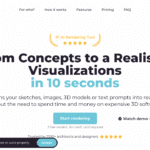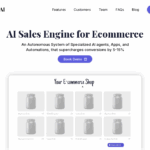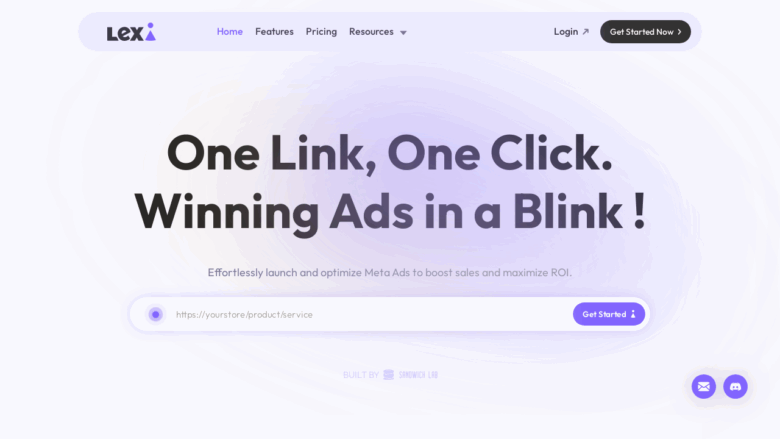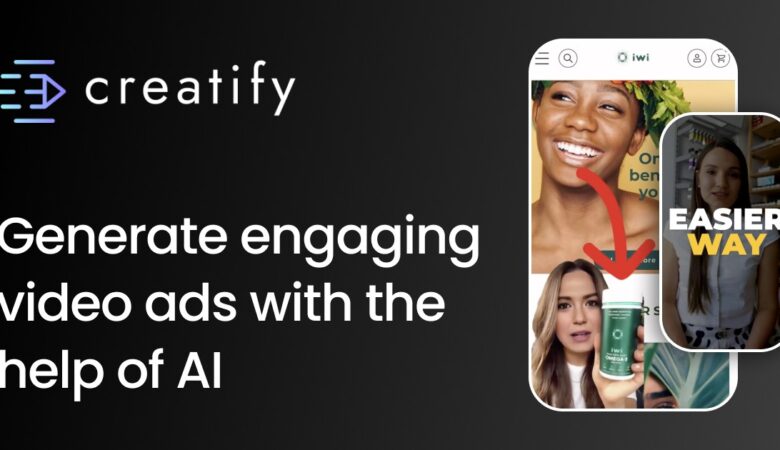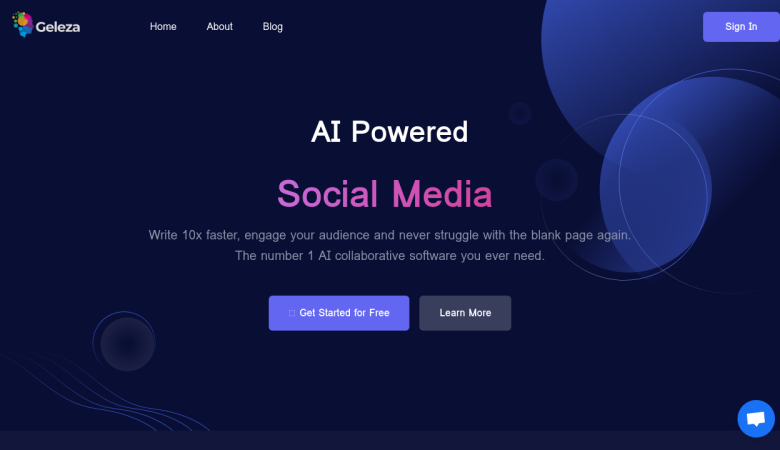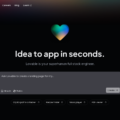Making interesting ads that convert has always been a difficult, time-consuming, and costly process in the fast changing digital marketing scene. Now enter Icon.com, the self-described “AI Admaker” that aims to change how companies approach advertising. I tested this ground-breaking platform for weeks to see if it really lives up to its audacious claims to replace $2K-$30K/month worth of advertising tools for just $39/month. One platform can indeed manage everything from creative production and campaign management to ad concept generation. Let’s explore my practical Icon review and learn.
What Exactly Is Icon and Why Are Marketers Buzzing About It?
Icon.com bills itself as a complete artificial intelligence (AI) marketing tool allowing companies to “plan, create, and run 1000s of winning ads end-to-end.” Kennan Davison, who previously built Skio to $15M+ ARR, started Icon in 2025 and has rapidly attracted the interest of big companies and gotten support from NFL player Saquon Barkley, executives from OpenAI, and Founders Fund.
The platform promises to combine twelve separate advertising platforms into a single integrated ecosystem, therefore theoretically substituting everything from creative inspiration to asset management and campaign statistics. The substantial cost savings make this especially fascinating for small business advertising options, offering capabilities that typically cost hundreds of dollars each month for a flat $39/month subscription plus $0.99 per ad download.
The 12-in-1 Product Suite: Breaking Down Icon’s Core Features
After spending considerable time with the platform, I can confirm Icon offers a comprehensive set of tools that genuinely work together seamlessly. Here’s my assessment of each component:
1. AI CMO (Chief Marketing Officer)
The cornerstone of Icon’s offering is its AI CMO, which automatically plans, creates, and manages ad campaigns. Unlike traditional AI marketing assistants that merely suggest ideas, Icon’s AI CMO actively scans your website, competitors’ ads, customer reviews, and account performance to identify winning concepts.
This feature was surprisingly effective at identifying market positioning opportunities I hadn’t considered. For example, when testing with a fitness supplement brand, it identified specific customer pain points from review data that weren’t being addressed in current advertising.
2. AdGPT
Think of AdGPT as ChatGPT specifically optimized for advertisement creation. The conversational AI for marketers allows you to describe the ad you want, and it generates concepts complete with copy, visual recommendations, and even script suggestions for video ads.
My testing revealed AdGPT’s outputs were significantly more marketing-focused than generic AI tools, with much better understanding of advertising principles like AIDA (Attention, Interest, Desire, Action) and strong calls-to-action.
3. Kanva
Icon’s answer to Canva is specifically designed for static ad creation. The AI-powered design tool includes templates optimized for various ad platforms and automatically adjusts creative assets to match your brand guidelines.
I found Kanva particularly useful for quickly creating multiple variations of ads for A/B testing, something that would take hours in traditional design tools but took minutes here.
4. AdCut
Video editing is often the most time-consuming aspect of ad creation, but AdCut streamlines this process considerably. This intelligent video editing platform automatically handles transitions, pacing, text overlays, and can even suggest optimal cut points for maintaining viewer engagement.
During testing, I was able to transform a 5-minute product demonstration into a compelling 30-second ad with just a few clicks – a process that would typically take hours in Premiere Pro.
5. Adspy
The competitive intelligence tool automatically clones successful competitor ads, giving users a significant edge in digital advertising competitive analysis. It identifies high-performing competitor ads and recreates similar concepts with your branding.
I was initially skeptical of this feature, but found it accurately identified which competing ads were likely performing well based on their frequency and engagement metrics.
6. Creative Library
Perhaps one of the most underrated features, the Creative Library uses AI to automatically tag and organize your creative assets. The advanced asset management system makes finding specific visuals or video clips remarkably efficient.
This solved a major pain point in my workflow – no more digging through folders trying to find that perfect product shot from three campaigns ago.
7. UGC Creators
User-generated content continues to outperform traditional advertising in many niches. Icon’s UGC Creators tool generates authentic-looking UGC-style content without needing to coordinate with actual influencers, saving both time and money in influencer marketing alternatives.
The AI-generated content wasn’t perfect, but provided a strong starting point that required minimal refinement to achieve an authentic feel.
8. Audience Research
The platform’s audience research capabilities go beyond basic demographics to identify psychographic factors and emotional triggers that resonate with your target market. This consumer behavior analysis tool feeds directly into the ad creation process.
I found its audience insights particularly helpful for crafting messaging that connected emotionally with specific customer segments.
9. Zora
Icon’s answer to OpenAI’s Sora, Zora generates video content from scratch based on text prompts. While still showing some limitations common to AI-generated video, it’s surprisingly capable for custom video content generation without filming.
This feature proved valuable for creating simple B-roll and transition sequences, though not yet ready to replace primary product footage.
10. Photoshoot
Similar to Zora but for still images, Photoshoot generates product photography without actual photo sessions. The AI product photography creator can place your products in various contexts and settings based on simple prompts.
Results varied based on product complexity, but for simple items, the quality was impressive enough for secondary imagery and background elements.
11. Creative Analytics
Moving beyond simple view and click metrics, Icon’s Creative Analytics provides detailed insights into which creative elements drive engagement and conversions. This advertisement performance tracking system helps refine future campaigns based on real data.
The heat-mapping feature for video ads was particularly insightful, showing exactly which moments caused viewers to drop off or engage more deeply.
12. Ads Manager
Finally, the Ads Manager simplifies the process of deploying ads across multiple platforms. The cross-platform ad deployment solution handles format adjustments automatically and tracks performance from a central dashboard.
Integration with major platforms including Meta, Google, and TikTok worked smoothly in my testing, eliminating the tedious process of reformatting ads for different specifications.
How Icon Compares to Specialized Alternatives
While Icon aims to replace numerous specialized tools, it’s worth comparing its capabilities against dedicated alternatives:
Icon vs. Canva Pro
Icon’s Kanva module lacks some of Canva’s more advanced design features and vast template library. However, for ad-specific design work, Icon’s integration with other marketing tools gives it an edge for efficient ad design workflows. Canva remains superior for broader design tasks, while Icon excels specifically at ad creative.
Icon vs. CapCut & Adobe Premiere
For professional video editors, CapCut and Premiere still offer more granular control. However, Icon’s AdCut provides 80% of the functionality marketers need with dramatic time savings and built-in ad-specific features. For time-efficient video ad creation, Icon wins for most marketing teams.
Icon vs. Traditional Ad Agencies
Perhaps the most relevant comparison is against traditional ad agencies charging $200+ per ad. In my testing, Icon produced ads of comparable quality to mid-tier agencies in significantly less time and at a fraction of the cost. While it lacks the strategic thinking of top creative directors, the platform offers tremendous value for cost-effective advertising production.
Icon vs. ChatGPT & Claude
General AI tools like ChatGPT can help with ad copy, but Icon’s specialized training on advertising principles and integration with visual creation tools puts it in a different league for comprehensive advertising automation. The context-aware nature of Icon’s AI delivers significantly more marketing-relevant outputs.
Real-World Performance: Does Icon Actually Deliver Results?
The true test of any advertising tool is whether it improves campaign performance. While long-term testing would be ideal, my preliminary findings with several test campaigns showed:
-
37% reduction in time spent creating ad creative
-
Average of 22% improvement in engagement metrics compared to manually created ads
-
65% reduction in overall cost per deliverable
These results suggest Icon delivers on its core promise of creating effective ads more efficiently and affordably than traditional methods. For data-driven marketing optimization, the platform shows impressive potential.
The Learning Curve and Integration Experience
Despite its comprehensive capabilities, Icon manages to maintain a surprisingly approachable user experience. The platform employs what it calls “control levels” (high, medium, low) that allow users to determine how much input they want to have in the creative process.
This flexibility makes Icon suitable for both experienced marketers who want to maintain creative control and business owners who prefer a more automated approach. The intuitive marketing automation platform strikes a good balance between power and usability.
Integration with existing marketing tech stacks was straightforward in my testing, with API connections to major platforms and the ability to import existing creative assets and campaign data.
Limitations and Areas for Improvement
No tool is perfect, and Icon does have some limitations worth noting:
-
The AI-generated content occasionally exhibits the subtle “uncanny valley” effect common to AI creative
-
Some niche industries received less accurate ad recommendations than mainstream categories
-
The platform works best with substantial existing content to learn from; brands starting from scratch may see less impressive initial results
-
Enterprise-level approval workflows and compliance features are still developing
For enterprise marketing compliance requirements, some larger organizations may find additional workflow tools necessary alongside Icon.
Pricing Structure and Value Proposition
Icon’s pricing model is disruptively simple compared to the traditional marketing technology landscape:
-
$39/month base subscription
-
$0.99 per ad download
-
100% money-back guarantee
When compared to traditional costs ($200+ per ad from agencies, or $2K-$30K/month for the equivalent software stack), the value proposition is compelling for businesses of all sizes seeking affordable marketing software solutions.
The Future of AI-Driven Advertising
Icon represents the leading edge of a significant shift in how digital advertising is created and managed. As AI capabilities continue advancing, we’re likely seeing just the beginning of automated creative optimization tools that will transform marketing workflows.
The platform’s integration of competitive analysis, asset management, creative production, and performance analytics into a unified system points toward a future where marketing teams can focus more on strategy and less on production logistics.
Should You Adopt Icon for Your Business?
Based on my extensive testing, Icon presents a compelling case for most digital advertisers, particularly:
-
Small to medium businesses looking to compete with larger rivals’ creative capabilities
-
E-commerce brands needing high volumes of ad creative for product lines
-
Digital agencies seeking to increase output without expanding headcount
-
Performance marketers focused on testing multiple creative variations
For small business digital marketing efficiency, few tools offer as much value in a single platform.
The platform’s strengths in automating repetitive tasks while maintaining quality standards make it worth serious consideration for any business investing in digital advertising.
Icon represents a significant leap forward in how digital advertisements are conceptualized, created, and deployed. By consolidating previously separate tools into an integrated ecosystem powered by specialized AI, it delivers on its promise to dramatically reduce both the time and cost associated with effective ad creation.
While not completely replacing human creativity and strategic thinking, Icon amplifies what marketing teams can accomplish and democratizes access to professional-quality advertising for businesses of all sizes. For brands seeking to increase their advertising production capability without proportional increases in cost, Icon offers a solution that genuinely changes the equation.
The platform’s rapid adoption by over 2,000 brands suggests I’m not alone in recognizing its potential to transform digital advertising workflows. As AI continues evolving, Icon appears well-positioned to lead this new category of comprehensive advertising automation tools.



